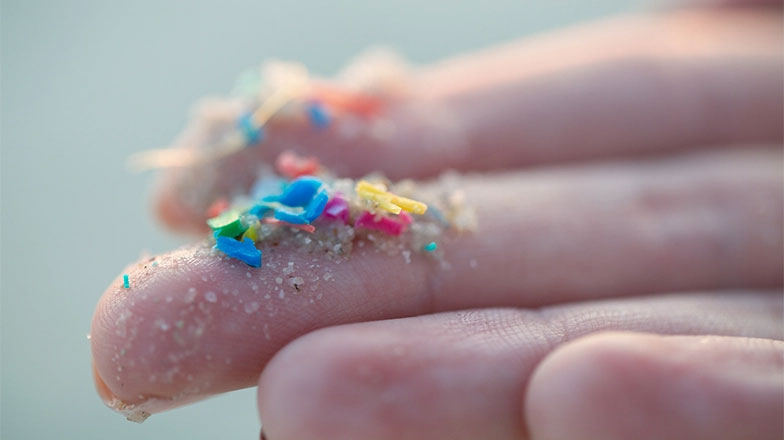Microplastics and How They Affect the Body

Microplastics, little pieces of plastic that are considered environmental pollutants, are everywhere: in our food, in the dust and rain, and even in our bodies. They've turned up in our saliva, breast milk, and liver. Evidence has even shown that in some newborn babies, microplastics are found in their first stool.
Given the increase in microplastics found in the environment, in our food, and in household items such as tea bags and plastic containers, there is a growing curiosity and desire for more research around the potential effects and dangers of the tiny invaders. However, the research about microplastics' impact is still limited. In the meantime, if you're searching for ways to reduce your exposure to microplastics, find tips below.
What are microplastics?
Microplastics are small pieces of plastic—usually no larger than 5 millimeters—that can be harmful to the environment, and, potentially, our health. Research is looking at whether microplastics can change the human body's intestinal microbiome because they may disrupt the balance of good versus bad bacteria. Nanoplastics, which are smaller than 1 micrometer, are especially concerning to scientists and medical researchers because they can infiltrate cells. Microplastics degrade slowly, meaning they stick around in the environment and in the human body. Every day, we eat, drink, or inhale microplastics, thanks to their ubiquitous presence in food products and in the environment.
However, there’s little data currently on the impact of microplastics on human health, and more research is needed for a greater understanding of how microplastics can impact—and even disrupt—the human body. According to the Food and Drug Administration (FDA), multiple studies have found that current scientific data doesn't indicate there's a risk to human health from microplastics found in food. But the agency recognizes that there is no standard way to detect, quantify, or characterize microplastics and nanoplastics, so the studies have used different methods to look at microplastics. The FDA is regularly monitoring microplastics in food, and if it finds adverse impacts on health, it will take regulatory action.
How to avoid microplastics
Although the data about microplastics and health aren't robust, it might still be wise to think about how to limit your exposure to them. Luckily, there are some easy swaps you can make to help you avoid microplastics. Try a few of the tips below:
- Avoid microwaving food in plastic containers
- Drink filtered tap water
- Reduce your consumption of seafood
- Replace tea bags with loose-leaf tea
- Avoid single-use plastics, like plastic silverware
- Dust and vacuum regularly
- Use plastic-free cosmetics
- Use eco-friendly detergents
- Purchase eco-friendly clothing
Protect your health and speak with your primary care provider
Speak with your primary care provider for more tips on avoiding things in the environment that could be bad for your health. If you do not have one, find a primary care physician or nurse practitioner near you who is accepting new patients.
If you have urgent questions or medical concerns while your doctor’s office is closed, consider scheduling a same-day appointment to speak with a BJC provider quickly.
- Reserve a time at one of the BJC Medical Group’s Convenient Care locations.
- Schedule a virtual care appointment via video from the comfort of your home.
Recent News
Article
Breathe Easier: Tips for Improving Your Lung Health
Article
Chenitra Emergency Care
Article
Leading The Way in Lung Cancer Diagnosis
Article
Safety Tips for 4th of July Firework Fun
Article
Metro East Vascular Access Center
Article